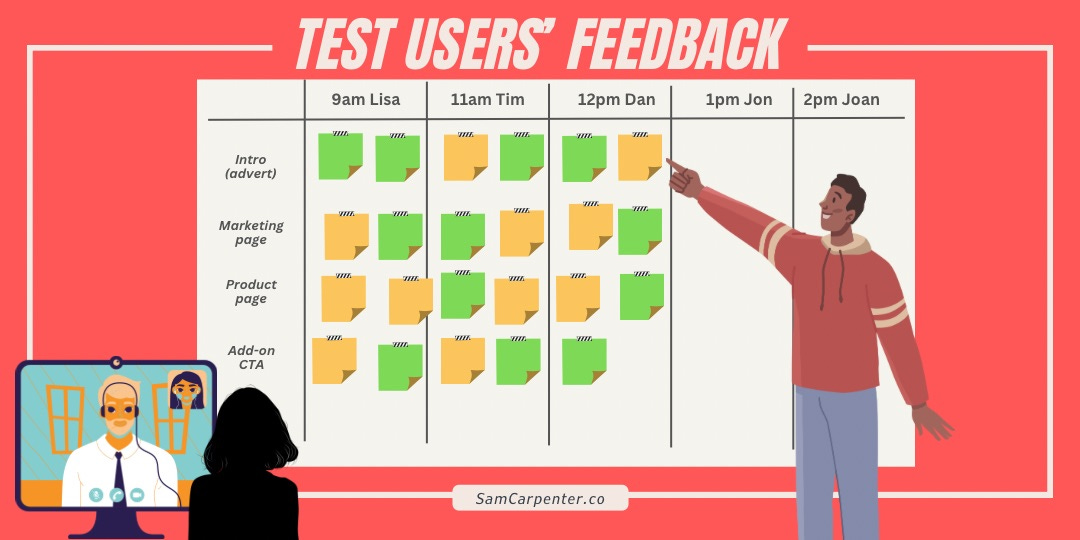It’s the last day and this morning’s goal is to test the prototype with 5 real users.
It’s the day where everything from the design sprint comes together. You start to get feedback from real people and you get to see whether your longterm goal and sprint questions are in the right direction or not.
Conduct the interviews
Help the interviewee feel at ease: offer them a drink if in person or if remote, ask them something like ‘how’s the weather’ where they live, just to settle them. Let them know they’re not being tested, instead we are testing the prototype.
Ask them to think aloud as they’re looking at the prototype screens and that you want their positive and negative feedback as this will inform us how we’ll iterate the prototype. Be clear no offence will be taken from their critisism.
Ask warm-up questions to get the conversation flowing, using open questions such as: “What’s the first thing you notice on this screen?” Avoid closed questions like: “Do you like this?” or “What do you think of that?”
Guide the user how to go from one screen to the next, as the screens don’t have all the detail.
Meanwhile, the other interviewer is taking notes and sticking them in the corresponding area on the feedback wall. Use 2 different colour stickie notes, green for positive and affirming comments and orange for confusions or negative responses.
Once the testing is complete, as well as the testers after their 1 hour slots, the interviewers can leave too and knock-off early.
Afternoon’s goal: Use the feedback from testing to create clear next steps
Create the report:
Ensure the entire report is concise. It will serve as a great reference asset that outlines what went on in the design sprint and its outcomes. The report is also a great way for the people in the sprint to share the outcomes and the process with others who haven’t done a design sprint before in other areas of the organisation.
The report should include…
A brief summary of the exercises
Include photos taken
Main big points of feedback, positive and negative and the patterns that emerged
Outline the sprint goal and the sprint questions we needed to answer
Detailed summary of the testers: who they are, their relevant demographics and the outcome of the sprint
Recommendations on next steps based on the outcomes of user feedback. Depending on what feedback was given, recommend whether to pursue certain features from certain parts of the concept or not. Sometmes ideas are invalidated because of the feedback.
Prioritise a list of features using the Effort / Impact map, (see earlier 2x2 Matrix blog for explanation) this will inform the product’s backlog and roadmap.
The Following week
In the following week of the design sprint, check-in with the design sprint team and ask how everyone’s experience of it was, especially those who did it for the first time.
Make sure to thank everyone for their hard work - they’ve done something they should be really proud of. Then talk through the report covering the main big points, both positive and negatives of testers’ feedback and the recomendations of the next steps. Reflect on their expectations you captured at the beginning of the sprint and make sure these are addressed now by going through all the work that was covered in the 4 days. Run through the effort/impact map for a second pass with them to determine alignment: it might be someone has experience and evidence to adjust some items’ positioning.
This catch up is a great place to get people committing to some of the to-dos from the next steps’ list on that effort/impact matrix.
That concludes this Design Sprint activity and this blog series.
I hope this blog has given you enough information and easy to follow detail so you can confidently run a design sprint. If you want more support, to either coach or train you further, or run a sprint for you, please contact me - see ‘4 Links’ in my profile area.

